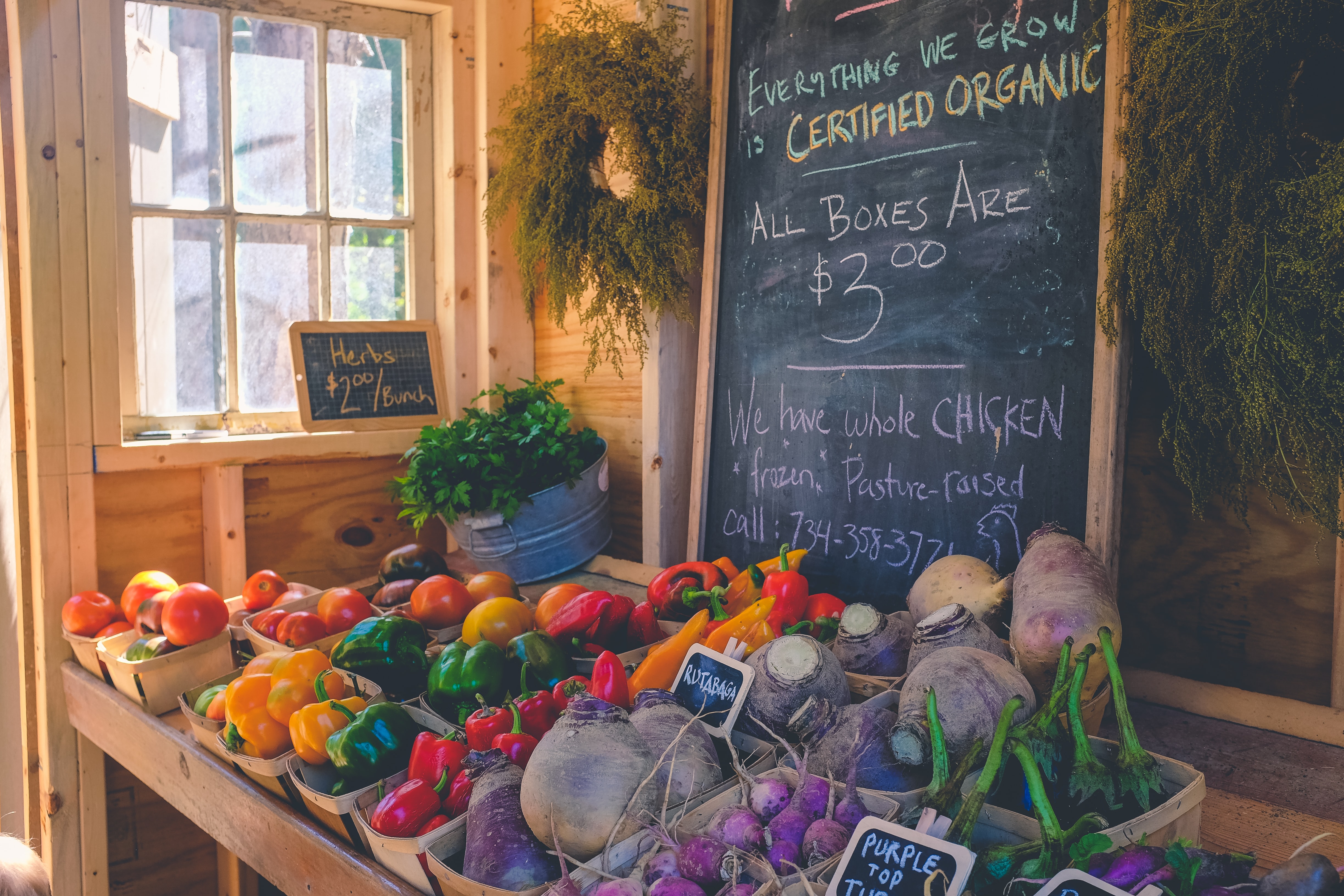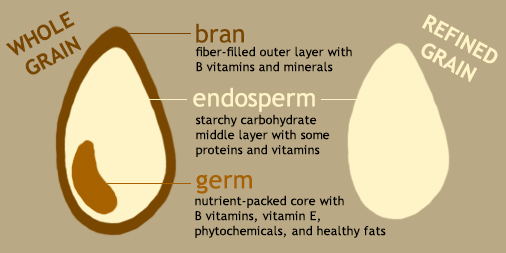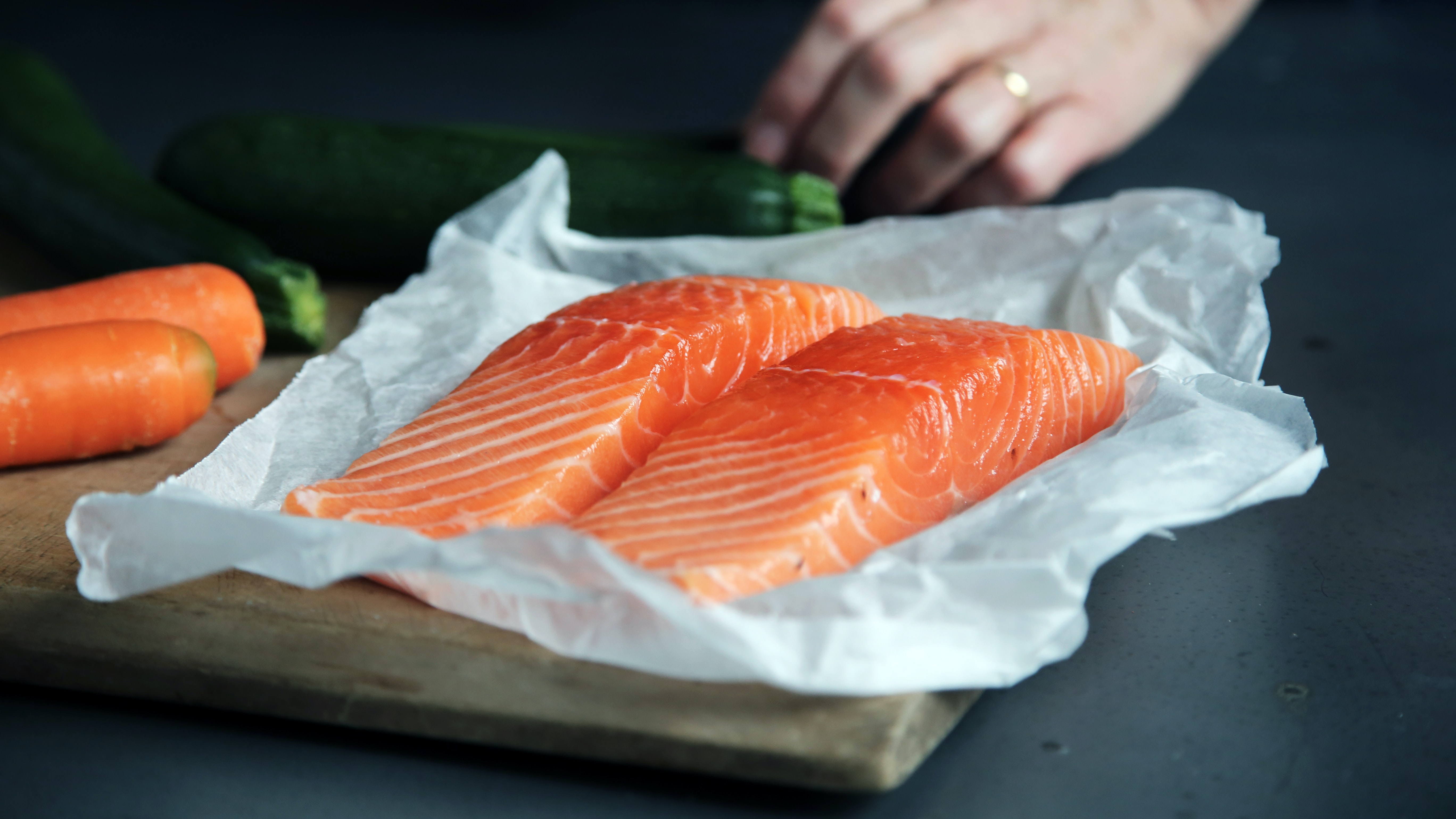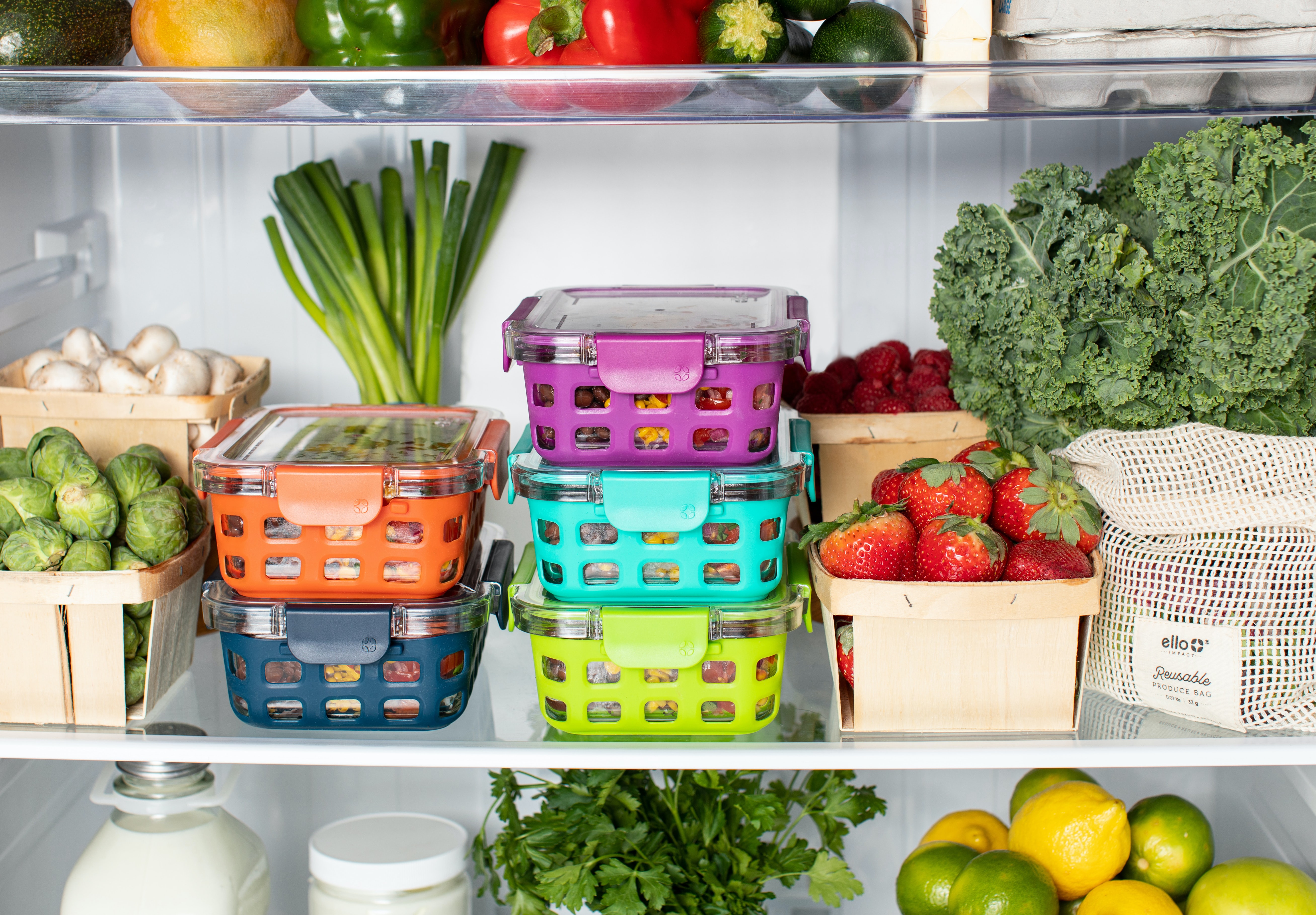Putting Nutrition to Practice: Tips for Making Dietary Changes

Table of Contents
- Choosing high-quality ingredients
a. Organic vs. conventional ingredients
b. Avoiding processed foods
c. Choosing whole grains
d. Choosing safe seafood - Food Journals
a. Food journaling apps
b. Food journaling templates - Cost conscious strategies for healthy eating
- Meal planning
a. Meal planning apps
b. Meal kit services
c. Meal delivery - Recipies and cookbooks
- References
There is more to food than just calories and nutrients. Food is an important part of culture and identity. While the anti-inflammatory diet is based on the Mediterranean diet, just about any cultural diet can be adapted to fit the anti-inflammatory diet framework. In addition to culture, there are many other factors that affect what type of diet an individual can and should follow. Some of these factors include other medical diagnoses (such as diabetes, kidney disease, irritable bowel syndrome, etc), food allergies and sensitivities, budget, local food availability, and physical limitations that impact food preparation. Dietary change can be intimidating, but you don’t need to do it alone or all at once. Start with one small change at a time, and if you need additional support, ask your doctor for a referral to a registered dietitian nutritionist. Below are some tips and resources to help you on your journey.
Disclaimer: Food is controversial. These resources represent our best attempt to compile guidelines to help you make healthy food choices based on the best and current available science. These resource attempt to balance multiple and often conflicting priorities, including budget, environmental impact, cultural preferences, and personal health limitations. There is no such thing as a one-size fits all approach to nutrition. Choosing the best dietary program for your health, lifestyle, and resources requires a personalized approach!
Choosing high quality ingredients
A lot of questions quickly come up when trying to make better food choices. Some of the most common include choosing organic, making healthy and sustainable seafood choices, and avoiding processed foods.
Organic vs. conventional ingredients
Organic foods remain somewhat controversial. Studies have found that organic foods have lower pesticide and herbicides (1), and many of these have been linked to negative health outcomes (2). Additionally, organic foods have been found to be higher in phytonutrients, which are linked to positive health outcomes (3). However, organic foods can be expensive. If limiting yourself to only eating organic produce reduces your total intake of fruits and vegetables, this is not going to benefit you overall. Additionally, just because something is organic doesn’t mean it is healthy. Better to have a conventional apple than an organic cookie!

The clean fifteen and dirty dozen is a helpful resource for choosing which fruits and vegetables to prioritize buying organic and which to buy conventional. A good guideline is to buy organic when you eat the peel (think apples, berries, etc.) and to buy conventional when you don't (bananas, avocados, etc.). However, as you’ll see, there are some exceptions to this rule.
|
Clean Fifteen |
Dirty Dozen |
|---|---|
| 1. Avocados | 1. Strawberries |
| 2. Sweet corn | 2. Kale, Collards, Mustard greens |
| 3. Pineapple | 3. Spinach |
| 4. Onions | 4. Nectarines |
| 5. Papaya | 5. Apples |
| 6. Sweet peas (frozen) | 6. Grapes |
| 7. Eggplant | 7. Cherries |
| 8. Asparagus | 8. Peaches |
| 9. Broccoli | 9. Pears |
| 10. Cabbage | 10. Peppers |
| 11. Kiwi | 11. Celery |
| 12. Cauliflower | 12. Tomatoes |
| 13. Mushrooms | |
| 14. Honeydew | |
| 15. Cantaloupe |
Avoiding processed foods
The anti-inflammatory and Mediterranean diets recommend eating whole unprocessed foods and avoiding ultra-processed foods. But what does that mean? Whole, unprocessed foods are foods in as close to their natural state as possible. Typically the more processed a food is, the less nutritious it is. In particular, ultraprocessed foods have been linked to multiple negative health outcomes (4). Fresh fruits and vegetables, beans, nuts, and seafood are examples of whole, unprocessed foods. However, there are still plenty of healthy foods that don’t look like they do in nature. Tofu is a good example—it doesn’t look anything like the soybean it came from. This is considered minimally processed. Consider minimally processed foods as foods that given the proper time, skill, and equipment, you could make in your own kitchen. Author Michael Pollan puts it another way, “Don’t eat anything your great grandmother would not identify as food.” If a food comes in a package, look for short, simple ingredients lists, and avoid foods with ingredients you cannot identify or pronounce. However, this isn’t a perfect guideline. For example, many vitamins and minerals are listed by their scientific names. If you DO choose to eat packaged food, look at the label and avoid added sugar.
Choosing Whole Grains

Grains, like most foods, are more nutritious the less processed they are. Whole grains are grains that contain all of their original components: the fibrous outer covering (also called the bran), the germ, and the starchy endosperm. You can also think of whole grains as the grains that look the most similar to the way they naturally grow in nature or on a farm. For example, brown rice contains the high fiber outer covering, while white rice has been refined to remove the outer covering. The fiber in the bran and germ of brown rice helps slow how quickly the carbohydrates in the rice get digested and turned into sugar in the body (5). Another example is oat processing. Steel cut, rolled, and instant oats all have the same starting material, but the more processed oats like instant oats are less healthy than steel cut oats and are more rapidly converted into sugar (6).
Whole grains are an excellent source of fiber, which has been found to have a positive effect on the gut microbiome (7). The gut microbiome refers to the population of bacteria and other microbes living in our intestines. Beneficial bacteria are referred to as probiotics, and the fiber that those bacteria eat are known as prebiotics. A diet high in fiber, and therefore high in prebiotics, helps support the healthy bacteria that help us digest our food. Though we don’t yet understand all the ways the microbiome affects human health and disease (many scientists are working on this), there is plenty of research showing that a high-fiber diet and a diverse gut microbial community reduces the risk of a variety of conditions, ranging from obesity to cardiovascular disease and inflammatory bowel disease (8). So when eating grains, choose high-fiber, whole, and minimally processed options as often as possible. Examples of unprocessed whole grains include: amaranth, barley, brown rice, wild rice, quinoa, oats, and buckwheat.
Choosing safe seafood
There are two things you want to be careful about when making seafood choices—mercury and omega-3 fatty acids. Some people are also concerned about making sustainable choices as well. You should choose seafood that is high in omega-3s and low in mercury. A good guideline is that larger, longer-lived fish are higher in mercury, and smaller, shorter lived fish are lower in mercury. However, there will inevitably be some exceptions to this rule. There are multiple resources online to help you make the best choices.
- Environmental Working Group (EWG) Consumer Guide to Seafood
- Includes seafood calculator based on age, weight, and other health factors to recommend servings of low, medium, and high mercury seafood options.
- EWG recommends salmon, sardines, mussels, Atlantic mackerel, and rainbow trout, as they are high in omega-3s, low in mercury, and sustainable. Swordfish, marlin, orange roughy, king mackerel, and shark should be avoided due to mercury content.
- Monterey Bay Aquarium Seafood Watch
- Seafood recommendations based on sustainability, does not have specific nutrition recommendations.

Food Journals
Food journaling has a number of benefits. It helps promote mindfulness, provides a basis for targeted nutrition advice, and can be used as a foundation for developing your own meal plan. However, some individuals find keeping a food journal to be stressful or potentially triggering, especially if there is a history of disordered eating. For people in this situation, food journaling is not a good fit. For other people, keeping a simple food journal can be very helpful. You can start with one word entries—no weighing or measuring required. You can use our food journal template or a food journaling app. Below are some of our favorites.
Food Journaling Apps
- Foodility. Simple free food journaling app. Only available on iPhone.
- MySymptoms. Allows you to track food and symptoms and helps identify potential food sensitivities. Costs about $5, flat fee, no subscription.
- Cronometer. Comprehensive diet analyzer. Analyzes calories, macronutrients, and micronutrients in great detail. Helpful for identifying nutritional gaps and deficiencies. However, requires significantly more effort and is more expensive, it costs around $40 for a year subscription.
Food Journal Templates
If you’d prefer not to use a food journaling app, you can keep a physical food journal or a digital food journal using one of the following resources:
Cost-conscious strategies for healthy eating
Eating healthy on a budget can be challenging, especially in our current world of supply chain issues and rampant inflation. However, many of the principles around the anti-inflammatory diet may help save you money.
- Plan your meals. Planning ahead and cooking more at home is typically cheaper and healthier than eating takeout on a regular basis. Incorporating the same ingredients into multiple recipes in your meal plan can help reduce food waste and your grocery bill. Additionally, having a backup plan to your meal plan will also help avoid takeout on busy days. Make sure you have a few quick recipes you can make from what you have in your pantry and at least one frozen option.
- Eat more beans. Beans are a woefully underutilized food group and should be a staple of the budget-conscious anti-inflammatory kitchen. Canned and dry beans are both great, but dry are typically a better value and you can find more interesting varieties. Even the fancy heirloom dry beans are pretty budget friendly. They are a great source of protein, fiber, and are staples of many food cultures around the world. However, a word of caution: if you’re not used to eating beans, slowly increase the amount in your diet. Too much too quickly may cause some gastrointestinal upset.
- Eat less meat. Quality meat was expensive even before a global pandemic and supply chain issues increased meat prices. Red and processed meat are particularly inflammatory, and intake should be reduced regardless of budgetary concerns. Choosing a vegetarian source of protein over meat is good for the planet, your health, and your wallet.
- Download Good and Cheap. Although not specific to the anti-inflammatory diet (or any diet), Good and Cheap by Leanne Brown has many helpful tips and recipes on how to eat well on a budget. You can download a free PDF of the cookbook on her website.
- Seek out food assistance programs if needed. Sometimes cost cutting tips aren’t enough to make up a nutritious diet. There are many great food resources in the Bay Area for those struggling with food insecurity. A few such resources are listed below.
Food assistance programs
- SF Food Resources Map
- Searchable map of free or low cost food resources in San Francisco
- SF-Marin Food Bank
- Multiple locations and programs, including neighborhood pantries, mobile pantries, and home-delivered groceries.
- CalFresh
- CalFresh is also called the Supplemental Nutrition Assistance Program (SNAP). It is a government benefit program to help qualifying individuals pay for grocery items.
- CalFresh is also called the Supplemental Nutrition Assistance Program (SNAP). It is a government benefit program to help qualifying individuals pay for grocery items.

Meal Planning
Planning meals ahead of time and scheduling time to cook is one of the best ways to improve the quality of our diets. By having a plan, you will be less likely to turn to takeout or other convenience foods that may derail your nutrition plan. Premade meal plans can sometimes be helpful, but these are not personalized and do not take your dietary preferences, restrictions, budget, time, and cooking skill into account. Our meal planning worksheet can help you create your own personalized meal plan. Perhaps the most important step is having a backup plan, ideally multiple! You may want to batch cook and freeze some meals and/or have a reasonably healthy go-to takeout order for life’s inevitable hiccups. Depending on budget, you may find meal kit services or meal planning platforms to be helpful when getting started.
Meal planning apps to consider
Meal planning apps and platforms can help give you recipe ideas, or simply help you organize your own recipes.
- MealLime
- Free smartphone app with recipe database and option to customize to dietary restrictions and preferences. Can create grocery lists.
- EatLove
- Through this app and web platform you can create your own meal plan and connect with a registered dietitian nutritionist to help you optimize your plan to meet your nutritional needs. Free two week trial, around $10/month after that.
- Paprika
- Helpful for organizing your own recipes, but doesn’t have a recipe database. Basic version is free.
Meal Kit services
Meal kit services can be helpful for individuals and families beginning to cook more from scratch and meal plan. Many meal kit companies can accommodate a variety of dietary restrictions, preferences, and cooking skill levels.
- Green Chef
- Organic ingredients, meals intended to take 30 mins or less. Vegan, paleo, or flexible meal plans available.
- Purple Carrot
- Vegan, has both meal kits and prepared meals.
- Hello Fresh
- Portioned, premeasured ingredients. Larger portion sizes available. Meal options include pescatarian, vegetarian, family friendly, and quick and easy.
- Sun Basket
- Organic and sustainable ingredients. Lots of meal plan options including diabetes-friendly, paleo, gluten free, Mediterranean, and premade meal options. They also have a few "oven ready" no prep meal options available and Registered Dietitian Nutritionists on staff.
Meal delivery (premade) services
Premade meal delivery services can be helpful for individuals who are very limited on time to dedicate to food preparation or have physical limitations. However, most premade meal delivery services are relatively expensive, and thus not the best option for those of us working with a limited budget.
- Thistle
- Options for breakfast, lunch, and dinner. Gluten free, dairy free.
- Methodology
- Vegan, paleo, Mediterranean, and pescatarian options available. Options for breakfast, lunch, and dinner.
- Freshly
- Can cater to dietary preferences including gluten free, dairy free, peanut free, and carb consious. Delivered fresh with a shelf life of 3-5 days.
- Three Stone Hearth
- Local company, has mostly paleo meal options, weekly rotating menu.
- Planted Table
- Local company, vegan, weekly rotating menu.
Recipes & Cookbooks
Recipe websites
Anti-Inflammatory diet cookbooks
- The Complete Ant-Inflammatory Diet for Beginners by Dorothy Calimeris and Lulu Cook, RDN
- Simple anti-inflammatory recipes, with two week meal plans, including shopping lists and background info on the anti-inflammatory diet.
- The Power of Yum by Rebecca Katz
- Flexible recipe frameworks to help adapt recipes to your dietary needs and preferences
- Fast Food, Good Food by Andrew Weil, MD
- Recipes based on Dr. Weil’s anti-inflammatory pyramid. Most recipes can be adapted to be vegan, vegetarian, or gluten free.
Budget friendly cookbook
- Good and Cheap by Leanne Brown
- Tips, resources, and recipes for eating healthy on a limited budget. Not specific to an anti-inflammatory diet specific.
Basic reference cookbook
- How to Cook Everything by Mark Bittman
- Comprehensive cookbook, title says it all. Does not focus on a specific diet.

Anti-inflammatory meal ideas
There are so many cookbooks and recipe websites out there, and even the short list above may feel overwhelming. Here are a few recipe ideas to help you get started.
Breakfast
- Mighty carrot raisin muffins (Brenda Davis RD)
- Eat complete breakfast smoothies (Rebecca Katz)
- Mixed berry baked oatmeal (The Real Food Dietitians)
- Sweet potato and carrot breakfast hash (Food and Nutrition)
Lunch
- Bento box soup (Rebecca Katz)
- Lemony lentil and quinoa salad (Rebecca Katz)
- Slow cooker sweet potato chili (The Real Food Dietitians)
- Curried chicken salad (Rebecca Katz)
- Antioxidant rich red lentil soup (Brenda Davis RD)
Dinner
- Chickpea and broccoli masala curry (Dr. Weil)
- Buffalo chicken stuffed spaghetti squash (The Real Food Dietitians)
- Roasted ginger salmon (Rebecca Katz)
- Stuffed sweet potatoes with avocado sauce (Brenda Davis RD)
- Easy egg roll in a bowl (The Real Food Dietitians)
- Easy pasta salad with chicken and vegetables (Eat Right)
Snacks
- Anytime bars (Rebecca Katz)
- Mixed berry protein chia pudding (The Real Food Dietitians)
- Cherry chocolate energy bites (The Real Food Dietitians)
- Curried hummus and vegetable pinwheels (Rebecca Katz)
A note about breakfast and snacks: Many of us have preconceived notions about what “breakfast” and “snack” foods should be. We encourage you to think outside the box when it comes to planning these meals. Breakfast doesn’t need to be “breakfast foods” and snacks are just another mini meal. For example, soup can make a lovely breakfast, and leftovers can make a great snack.
Super simple recipes
These recipes have been adapted from recipes writted by Registered Dietitian Nutritionists and submitted to Food and Nutrition magazine, a publication for nutrition professionals. They have been further edited to meet the guidelines of the anti-inflammatory diet. Check out the Lazy Delicious section of Food and Nutrition magazine for more ideas.
Pumpkin Pie Overnight Oats: In a bowl, stir together ¼ cup plain Greek yogut or nondairy coconut yogurt, ¼ cup milk or plant based milk, 1 tablespoon of canned pumpkin puree and 1/8 teaspoon vanilla extract until combined. Add ⅓ cup rolled oats, 1 teaspoon of chia seeds and pumpkin pie spice to taste. Pour into a glass container, cover and refrigerate overnight to eat the next day.
Mediterranean Chicken Bowls: In a bowl, mix 2 chopped cucumbers, a handful of quartered grape tomatoes, ¼ of a diced red onion, a can of drained and rinsed chickpeas, 1 to 2 teaspoons of olive oil, the juice of half a lemon. Add any combination of fresh or dried herbs and spices such as basil, thyme, garlic, fennel, dill, and salt and pepper to taste. Pour into a bowl with cooked and quinoa and top with shredded rotisserie or leftover baked chicken. For a vegetarian version, use sautéed cubes of firm tofu instead of chicken.
Easy Curry: In a pot, sauté 1 chopped onion and 1 chopped bell pepper with olive oil. Once tender, add 1 can of drained and rinsed chickpeas, 1½ tablespoons curry powder, ½ teaspoon salt, 1 tablespoon tomato paste, about ½ cup plain Greek yogurt or non-dairy coconut yogurt, and ¼ cup water. Let simmer on the stove or in slow cooker until it forms a thick sauce. Serve over cooked brown rice. For added flavor, top with fresh cilantro. Use lentils in place of chickpeas or add cooked shredded chicken for extra protein. Add fresh or frozen broccoli, spinach, kale, or your favorite veggies for a more nutrient dense meal.
References
1. Crinnion WJ. Organic foods contain higher levels of certain nutrients, lower levels of pesticides, and may provide health benefits for the consumer. Altern Med Rev. 2010 Apr;15(1):4-12. PMID: 20359265.
2. Jadotte YT, Koos J, Lane D. Organic food consumption and the incidence of cancer: a systematic review protocol. JBI Evid Synth. 2021 May;19(5):1164-1171. doi: 10.11124/JBIES-20-00115. PMID: 33230014.
3. Glibowski P. Organic food and health. Rocz Panstw Zakl Hig. 2020;71(2):131-136. doi: 10.32394/rpzh.2020.0110. PMID: 32519524.
4. Lane MM, Davis JA, Beattie S, Gómez-Donoso C, Loughman A, O'Neil A, Jacka F, Berk M, Page R, Marx W, Rocks T. Ultraprocessed food and chronic noncommunicable diseases: A systematic review and meta-analysis of 43 observational studies. Obes Rev. 2021 Mar;22(3):e13146. doi: 10.1111/obr.13146. Epub 2020 Nov 9. PMID: 33167080.
5. Pletsch EA, Hamaker BR. Brown rice compared to white rice slows gastric emptying in humans. Eur J Clin Nutr. 2018 Mar;72(3):367-373. doi: 10.1038/s41430-017-0003-z. Epub 2017 Oct 23. PMID: 29235555.
6. Wolever TMS, Johnson J, Jenkins AL, Campbell JC, Ezatagha A, Chu Y. Impact of oat processing on glycaemic and insulinaemic responses in healthy humans: a randomised clinical trial. Br J Nutr. 2019 Jun;121(11):1264-1270. doi: 10.1017/S0007114519000370. Epub 2019 May 9. PMID: 31068229.
7. Vanegas SM, Meydani M, Barnett JB, Goldin B, Kane A, Rasmussen H, Brown C, Vangay P, Knights D, Jonnalagadda S, Koecher K, Karl JP, Thomas M, Dolnikowski G, Li L, Saltzman E, Wu D, Meydani SN. Substituting whole grains for refined grains in a 6-wk randomized trial has a modest effect on gut microbiota and immune and inflammatory markers of healthy adults. Am J Clin Nutr. 2017 Mar;105(3):635-650. doi: 10.3945/ajcn.116.146928. Epub 2017 Feb 8. PMID: 28179226; PMCID: PMC5320415.
8. Makki K, Deehan EC, Walter J, Bäckhed F. The Impact of Dietary Fiber on Gut Microbiota in Host Health and Disease. Cell Host Microbe. 2018 Jun 13;23(6):705-715. doi: 10.1016/j.chom.2018.05.012. PMID: 29902436.
Contributing Authors

Danica Cowan, MS, RD

Sarah Patterson, MD


